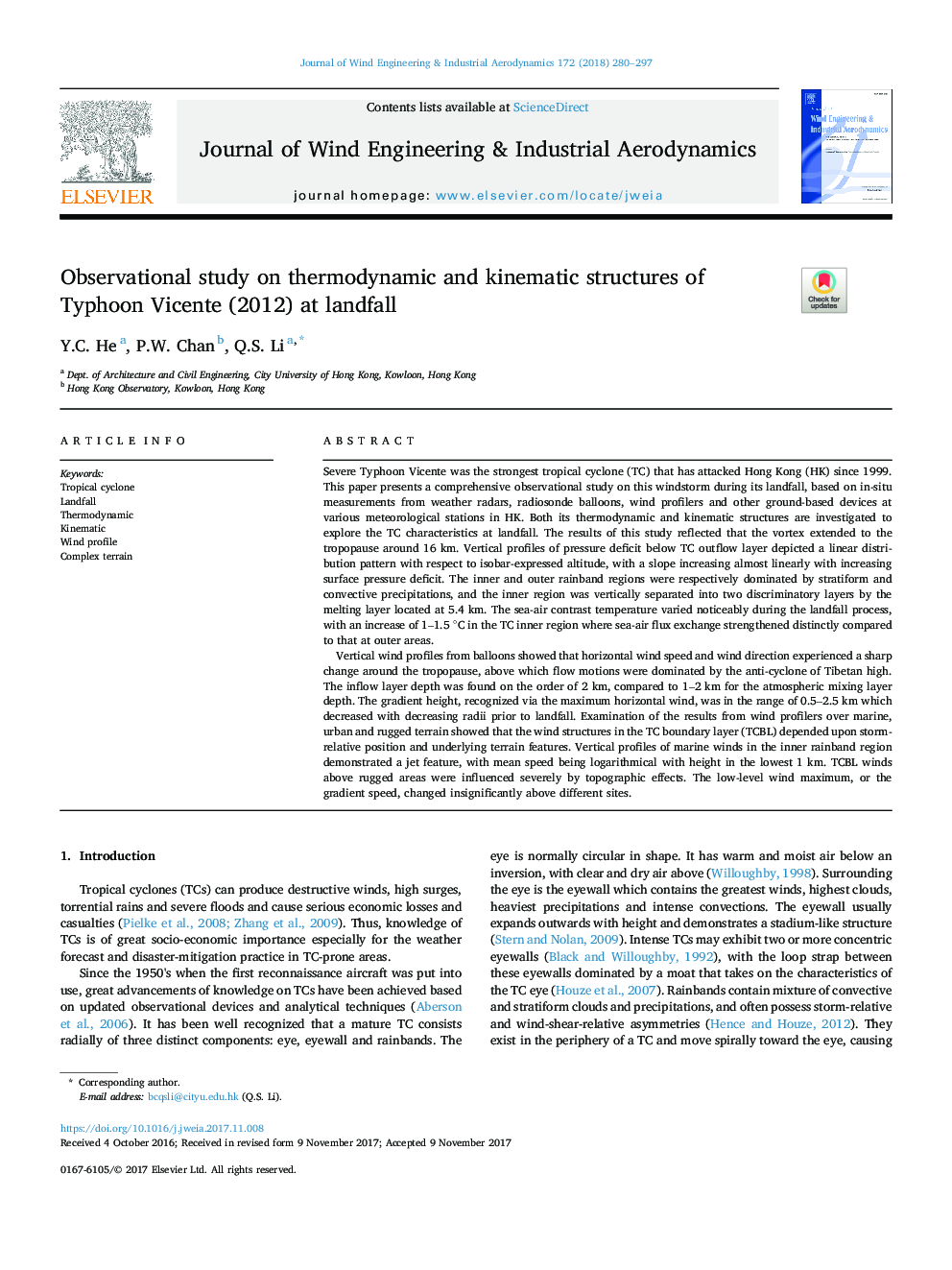| Article ID | Journal | Published Year | Pages | File Type |
|---|---|---|---|---|
| 6757222 | Journal of Wind Engineering and Industrial Aerodynamics | 2018 | 18 Pages |
Abstract
Vertical wind profiles from balloons showed that horizontal wind speed and wind direction experienced a sharp change around the tropopause, above which flow motions were dominated by the anti-cyclone of Tibetan high. The inflow layer depth was found on the order of 2Â km, compared to 1-2Â km for the atmospheric mixing layer depth. The gradient height, recognized via the maximum horizontal wind, was in the range of 0.5-2.5Â km which decreased with decreasing radii prior to landfall. Examination of the results from wind profilers over marine, urban and rugged terrain showed that the wind structures in the TC boundary layer (TCBL) depended upon storm-relative position and underlying terrain features. Vertical profiles of marine winds in the inner rainband region demonstrated a jet feature, with mean speed being logarithmical with height in the lowest 1Â km. TCBL winds above rugged areas were influenced severely by topographic effects. The low-level wind maximum, or the gradient speed, changed insignificantly above different sites.
Related Topics
Physical Sciences and Engineering
Energy
Renewable Energy, Sustainability and the Environment
Authors
Y.C. He, P.W. Chan, Q.S. Li,
